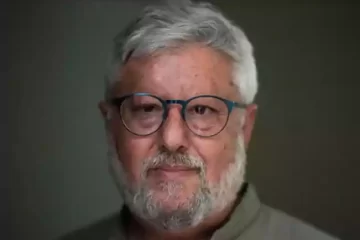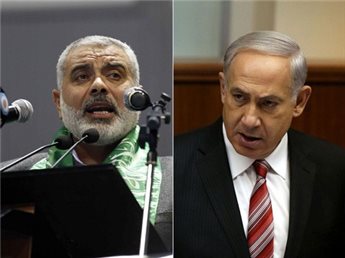Shortly after the return of Gilad Shalit, I drafted a proposal to the Government of Israel and Hamas to enter into a long term ceasefire arrangement based on the assumption that, for the time being, neither side was interested in engaging in renewed warfare. The assumption was well founded and based on the experience that I gained directly in helping to arrange a ceasefire between Israel and Gaza after the terrorist attack across the Sinai border in August 2011, while the Shalit negotiations were taking place.
Repeated rounds of rocket fire over the following year yielded the same results with both sides seeking a ladder to step down and avoid full escalation, which would not bring any political or military gains. Since that time, with the exception of the last round of violence two weeks ago, the rocket fire from Gaza was launched after a pre-emptive Israeli strike against terror cells. Based on Israeli intelligence information, pre-emptive strikes were conducted primarily against cells from the Islamic Jihad and the popular resistance committees. Hamas almost always sat on the sidelines and allowed the other factions in Gaza to shoot their rockets until the price in human life became too high. At that point, Hamas urged the Egyptians to intervene to secure a return to calm. In the last rounds, Hamas, under pressure from its public, joined in the shooting of rockets—but it almost always aimed its rockets at open spaces in Israel and their damage was minimal. It was clear to all involved that Hamas was not interested in escalating the situation and for its own reasons and agreed to impose the ceasefire on all of the other factions, and on itself.
The key actor on the Hamas side was Ahmed Jaabari, the commander of Ezedin al Qassam, the military wing of Hamas. When he was convinced that Israel was ready to stand down as well, Jaabari was always ready to take the orders to force the ceasefire on all of the other factions and on Hamas.
Both Israel and Hamas had decided months ago not to take action on my proposed ceasefire option, which included within it a mechanism that would prevent Israeli pre-emptive actions and would enable Hamas to prove that it was prepared to prevent terror attacks against Israel. Both sides responded very seriously to the proposal, but without any signal that there was an openness on the other side, neither was willing to advance the possibility for testing it.
Several weeks ago, I decided to try once again and, through my counterpart in Hamas, we both began speaking to high level officials on both sides. A few days ago I met my counterpart in Cairo and we agreed that he would draft a new proposal based on our common understanding of what was required to make it work.
Yesterday morning, hours before Israel assassinated Ahmed Jaabari, my counterpart in Hamas presented the draft to Jaabari and to other Hamas leaders. Senior Hamas leaders on the outside had already seen it and had instructed him to check the reactions to it in Gaza. I was supposed to receive the draft yesterday evening to present to Israeli officials who were waiting for me to send it to them.
That option is now off the table. Jaabari is dead and so is the chance for a mutually beneficial long term ceasefire understanding. Why did Benjamin Netanyahu do it? The cynical answer already offered by Aluf Benn in Haaretz is elections consideration. Cast Lead was also conducted before elections. Hitting Jaabari, according to Netanyahu’s thinking, would help him in the upcoming Israeli elections. Perhaps this is true, perhaps not.
It seems to me that some of the commanders of the Israeli army have been very frustrated that the previous agreements to return to calm left Israel in a weaker position, with Hamas calling the shots. They have been calling to rebuild Israel’s deterrence. Let them in Gaza feel the pain of a serious Israeli attack and then they will think seven times before shooting more rockets, is what they proposed. In the last days there has been a lot of talk from politicians, military experts and officers to return to the policy of “targeted killings.” This, they claim, would make the Hamas leaders hide for their lives and stop shooting at us. These military geniuses failed to realize that what never worked in the past will not work now either.
Now millions of Israelis and Palestinians are living under the terror of attack. Many more Gazans will be killed than Israelis, but is this a worthy achievement that we can be proud of and that will guarantee our long term security? I don’t think so.
I can only imagine that the assassination of Jaabari has bought us the entry card to Cast Lead II. This time, the experts say, “Let’s finish them off. Let’s do the job that we didn’t do last time. Let’s do a regime change.” Well, I ask: what then? Do we really want to reoccupy Gaza, because that will be the consequence of a regime change. I don’t believe that Netanyahu wants re-occupation. So if that is not what he wants, he must be aware that, on the morning after, we will still be living next to Gaza, which still be run by Hamas. They are not going away and the people of Gaza are not going away.
The assassination of Jaabari was a pre-emptive strike against the possibility of a long term ceasefire. Netanyahu has acted with extreme irresponsibility. He has endangered the people of Israel and struck a real blow against the few important more pragmatic elements within Hamas. He has given another victory to those who seek our destruction, rather than strengthen those who are seeking to find a possibility to live side-by-side, not in peace, but in quiet.


